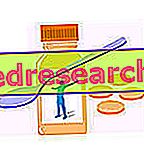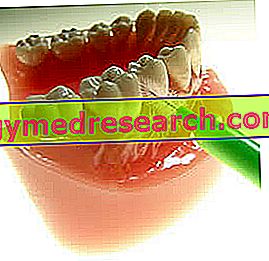Hypervitaminosis and Vitamin D
Hypervitaminosis is a morbid condition caused by excess vitamin, which generates intoxication of the organism.
There are various types of hypervitaminosis, depending on the type of vitamin taken in excess; however, it is important to point out that not all vitamins cause intoxication and that the excess can have very different consequences between one vitamin and another.

The discovery of morbid states of hypervitaminosis is quite recent, since in the past it was unknown that these nutrients, more often lacking than in excess in the diet, could somehow harm health.
Vitamin D
Vitamin D is a fat-soluble nutritional factor with a hormonal-like action. In nature it is widespread in various chemical forms, but the metabolically active one is calcitriol.
Vitamin D has various functions, among which the most important is the regulation of calcium and phosphorus in the body (but it is also necessary for the differentiation of some cells, for the immune system, etc.).
Calcium and phosphorus are essential for the skeleton, for the teeth and also for the muscles.
A lack of vitamin D can lead to bone deformities such as rickets in children and osteomalacia in adults; vitamin D and calcium deficiency in youth, responsible for failure to achieve peak bone mass, may favor the onset of osteoporosis in the elderly (especially in the presence of significant hormonal changes related to menopause).
Most of the vitamin D is synthesized in the skin starting from cholesterol, thanks to the action of the solar UV rays (at mid-latitudes, from May to September the organism is able to satisfy its own need for vitamin D fully and fully) .
In the autumn-winter period, or in any case in places where sun exposure is limited, it is necessary to increase the intake of vitamin D with the diet. The most relevant sources are: fatty fish, fish liver and related oil, egg yolk, certain mushrooms and fortified foods.
The dietary requirement for vitamin D is between 8.5 and 10 μg / day.
Too much vitamin D hurts?
Excess vitamin D can be harmful to health. Obviously. this depends on the actual extent of the excess, or on the amount of vitamin D capable of triggering intoxication in the body.
Toxicity
Excess of vitamin D and intoxication
Although all cases of documentary toxicity are reported at doses higher than 1, 000 μg / day (40000 IU), it is assumed that a prolonged intake of vitamin D at doses> 250 μg / day (10, 000 IU), with blood levels thereof equal to 100 ng / ml, they can cause both acute and chronic phenomena.
Causes
Causes of vitamin D intoxication
The causes of vitamin D intoxication are almost exclusively pharmacological. The nutritional component also plays a fundamental role but, as often happens, only when the diet includes supplements and fortified foods.
Symptoms
Symptoms of vitamin D intoxication
Symptoms of vitamin D hypervitaminosis are:
- Nausea
- Diarrhea
- Polyuria.
Clinical signs
The clinical signs of hypervitaminosis D are:
- hypercalcemia
- hypercalciuria
- Soft tissue calcification.
Consequences
What happens when you take too much vitamin D?
As we have said, specific hypervitaminosis and consequent intoxication can occur when taking excess vitamin D drugs and / or supplements for a long period of time.
In correlation to the symptoms and clinical signs already described, due to the accumulation of calcium in the blood (hypercalcaemia) coming from the bones, serious complications can arise, such as:
- Weakening of the skeleton
- Damage to certain organs like kidneys and heart.
Remedies
Remedy against vitamin D intoxication
To treat vitamin D intoxication it is necessary to suspend or reduce the intake with drugs and supplements.
It is not necessary to modify the diet, even if the elimination of all fortified foods could be beneficial to the recovery of blood D vitamin D homeostasis and consequently of serum calcium.
Dose
Right dose of vitamin D with supplements
Choosing to take supplements and foods fortified with vitamin D in addition to the ordinary diet, it is advisable not to exceed 10 μg / day.
Maximum dose of vitamin D with supplements
With amounts over 100 μg / day the chances of side effects are above normal. This applies to healthy adults, pregnant and lactating women, the elderly and children aged 11 to 17 years.
Children between the ages of 1 and 10 should under no circumstances exceed 50 μg / day.
The limit for infants under 12 months is 25 μg / day.
Note : the sick subjects could have a lower tolerance and suffer intoxication at lower doses. If in doubt, consult your doctor.
Dose of vitamin D in therapy
The dose of vitamin D necessary for therapy to combat rickets is 250 μg / day (10, 000 IU of vitamin D3 or cholecalciferol); consider this value as the maximum safe use limit for tolerable daily intake (UL).
Responsibility
Recommendations of the competent bodies
The information disclosure bodies are partly responsible for the few cases of vitamin D hypervitaminosis. Vitamin D deficiency has been responsible for serious public health problems for many years. Today, aware of the diseases that may depend on its nutritional deficiency, there is a tendency to excessively emphasize the importance of food supplementation. Recall that food supplements and fortified foods are over-the-counter products available in supermarkets, in pharmacies without a prescription or in drugstores. They are therefore widely available and available to everyone.
For example, the UK "Department of Health" recommends the following:
- Infants breastfed from birth up to one year of age must be given a daily vitamin D supplement containing 8.5-10 μg of active ingredient to ensure that the minimum requirement is reached.
- Infants fed with synthetic formulas should not resort to integration.
- Children between the ages of 1 and 4 should enjoy a daily supplement of 10 μg.
Furthermore, he recommends taking a daily supplement containing 10 μg of vitamin D throughout the year if:
- You don't leave the house often
- You are hospitalized
- We wear clothes that cover most of the skin.
Recommendations of this kind can be easily overestimated and often an excessive intake of vitamin D occurs. However, it must also be admitted that the criticality limit, already corrected by default, is about 10 times higher than the recommendations of the guidelines.



